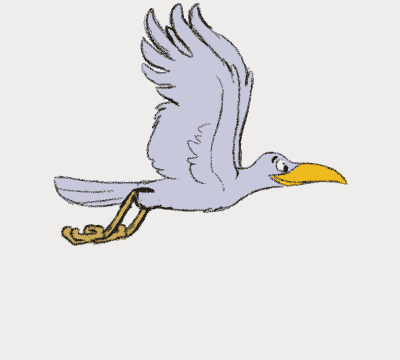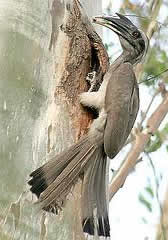Testimonial
Birding Sites
Gujarat
Other Places
Bird Identification
Many people who are already mildly interested in birds are afraid to purpose the subject because, as they sometimes express it, they ‘cannot tell a robin from a sparrow’. Others perhaps have shied away from an unfamiliar terminology. Such people do themselves needless injustice. The enjoyment of birds, whether casual or absorbing, which man has developed during centuries of sentimental attachment, depends neither upon intensive study nor academic qualification. Those who claim to be unable to distinguish a robin from a sparrow certainly recognise an eagle, a gull, a duck, an owl, and many others of the various bird families. They are, in fact, already quite a long way on the road to ‘knowing the bird’.But the terms ‘Eagle’, ‘Gull’ or ‘Duck’ are very broad. There are about 50 different species of eagles of eagles in various parts of the world, and many more species of gulls and duck. The purpose k is to show, without resource to complicated symbols, how to distinguish, at reasonable distance, all the species inhabiting or visiting India and sub-continent.There are about 8,600 different kinds of birds in the world. In India we have around 1400 birds you may able to reach without much efforts. We are concerned in India with only 832 basic species. These are described briefly in the link Avifauna of India. Subspecies of Indian Birds are briefly shown in many book on Indian Birds of recognised pulisher and keen birder or birdwatcher.
(1) What to look for The identification of birds is largely a matter of knowing what to look for the ‘field marks’. Exact diagnosis then depends upon a process of elimination, by comparison with other species, which the birds may resemble. The arrows on the illustration facilitate this process. But appearance is only one factor. Call-notes, song, attitudes, behavior, habitat and range are also important
(2) What is its Size?
First acquire the habitat of comparing strange birds with some familiar ‘Hand span’- a
House Sparrow, of black bird, of pigeon, etc., so that you can say to yourself ‘smaller
Than blackbird/Myna, a little larger than a sparrow ‘, etc. The measurements quoted in this book indicate the average length of the bird from bill-tip to tail-tip and are given both inches and centimeters
(3) What is its shape?
Is it plump, like a Robin (left); or slender, like a Wagtail (right)?
3a). What shape are its wings are they pointed, like a Swallow’s (left); of short and rounded, like a Sparrow ’s (right)?
3b). What shape is its bill? Is it small and fine, like a Warbler’s (1); stout and short, like a seed-cracking Sparrow’s (2); dagger-shaped, like a Darter ’s (3); or hood-tipped, like a Shikra ’s(4)?
3c). Is its tail deeply forked, like a Black Drong ’s (a); short and square-ended, like a Common Myna’s (b); deeply notched, like a Sparrow ’s(c); rounded, like a Koel ’s (d); or wedge-shaped, like a Jungle Crow ’s (e)?
(4) How does it Behave?
Some birds have very characteristic habits. Does it constantly wag its tail, like a Wagtail; quiver its tail, like a Redstart ; Cock its tail vertically, like a Wren; or sit bolt upright, with its tail downwards, like a Spotted Flycatcher?
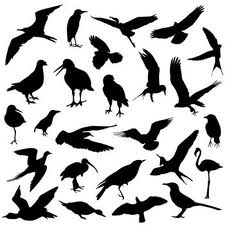
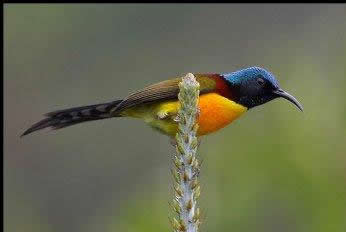
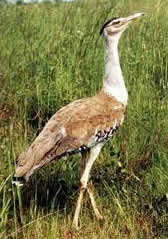
4a). Does it climb trees? Of so does, it climb upward in spirals, like a Treecreeper (1); in short jerks, braced on its braced on its stiff tail, like a woodpecker (2); or does it climb, without using its tail as a prop, as readily downwards as upward, like a Nuthatch (3)?If it feeds on the ground, does it walk, like a Crow; hop, like a House Sparrow; run spasmodically, like a wagtail; or shuffle along, close to the ground, like a Francoline?
4b) If it swims, does it sit high in the water, like a Moorhen (a); or low with its back almost awash, like a diver (b)? Does it dive, like a Coot (c); or merely ‘up-end’, like a Mallard (d)?4c)Does it take off from the water gradually, by splashing along the surface, like a Moorhen; or spring clear in one jump, like a teal?4d) Does it however over the water and diver headlong, like a tern, or a Kingfisher; or plunge after fish feet-first, like an Osprey; or walk deliberately beneath the water, like a Dipper?4e) Does it wide? If so, does it stand motionless in the shallows for long periods, like a heron; or run quickly along the margins, like a sandpiper; or chase the receding waves, like a Sanderling(5) How does it fly?
Is its flights deeply undulating, like a woodpecker’s (1); or straight and fast, like a Parakeet ’s (2)? Does it beat its wings slowly, like a heron; or rapidly, like a Mallard; or with alternate periods of wing-beats and ‘shooting’ like a House Sparrow, or does it soar on motionless wings a Buzzard?(6) What are its Field Marks?
Few birds can be instantly identified by colour alone. There is no mistake the brilliant yellow and black of a male Golden Oriole, for example. But we need also to look for certain field marks to distinguish most species. These take various forms. They are indicated by pointers on the illustration in the Field Guide, and correspond to the italicized portion of the accompanying descriptive texts. Obscure field marks are included only when the problem of identification demands completeness.
Many birds are more or less spotted or streaked below. Are these marks over nearly all the under-parts, as in the (a)Song Thrush ; (b)only on the upper breast, as in the Skylark ; (c)or only on the flanks, as in the Mini vet ?Does the tail have a distinctive pattern?
(1)Has it a white tips, as the finch ;
(2)white outer feathers, as in the Chaffinch ;
(3)or white side patches, as in the fork tail ? Some birds show a conspicuous white rump in flight-Jay, House Martin, Bullfinch, the Wheatear's, many warders, and the Hen Harrier, to mention a selection. Where so many species share such a prominent feature, it is necessary to look for additional field marks.Wing-bars are very important in such families as the warblers; some are conspicuous, some obscure, some single, some single, some double, some long, some short.Eye-stripes are equally important in many small passerines (perching birds). Does the bird have a stripe, through, or below the eye- or a combination of two, or three, of these stripes? Some warblers have distinctively coloured eyes, or eye-rims, or ‘moustachial’ stripes. These details are useful only when the bird permits close examination, of courseWing patterns should always be noted, particularly with ducks and waders. Wings may be all dark, or all white, or half-and-half or show conspicuous patches of white of colour, The exact location of such marks on wings, above or below, is important.( page under construction will be ready shortly)
Bird Hide
Bird Call / Sound
Birding Records
Bird Check list
